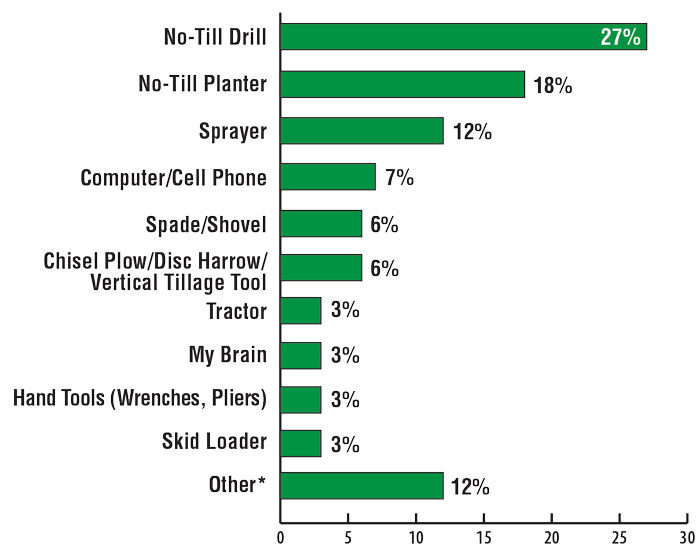No-Till Farmer
Get full access NOW to the most comprehensive, powerful and easy-to-use online resource for no-tillage practices. Just one good idea will pay for your subscription hundreds of times over.

A: My planter. Proper planter design and setup (seeding depth, spacing, residue management, downforce, furrow closing) is crucial to getting your crop planted correctly as you only get “one chance” to plant your crop at the right time each year
— Craig Lamoureux, Storm Lake, Iowa
A: My cell phone, because it allows me to take pictures of part numbers, seed variety tags, disease and crop progress, etc. It also helps me keep track of spray information, take notes on things I need to do and maintain good communication with others about workload and schedules. In addition, I use it to pay bills and much more.
— Wendell Good, Pekin, Ill.
A: For me it’s my John Deere 750 no-till grain drill. I use it to plant soybeans, wheat, alfalfa and cover crops. My corn planter, on the other hand, is used to plant ... corn. My drill is used on 2-3 times the acres the corn planter is used on.
— Dean Weichmann, Johnson Creek, Wis.
A: The most important “tool” on my farm is the soil. Healthy soil and a well-maintained landscape assists in consistent yields and minimum pathogens.
— John Flaherty, Ashland, Ore.
A: I believe the straw chopper and chaff spreader on the combine is most important. When no-tilling, the residue has to be spread evenly across the entire width of the machine to see the best results…